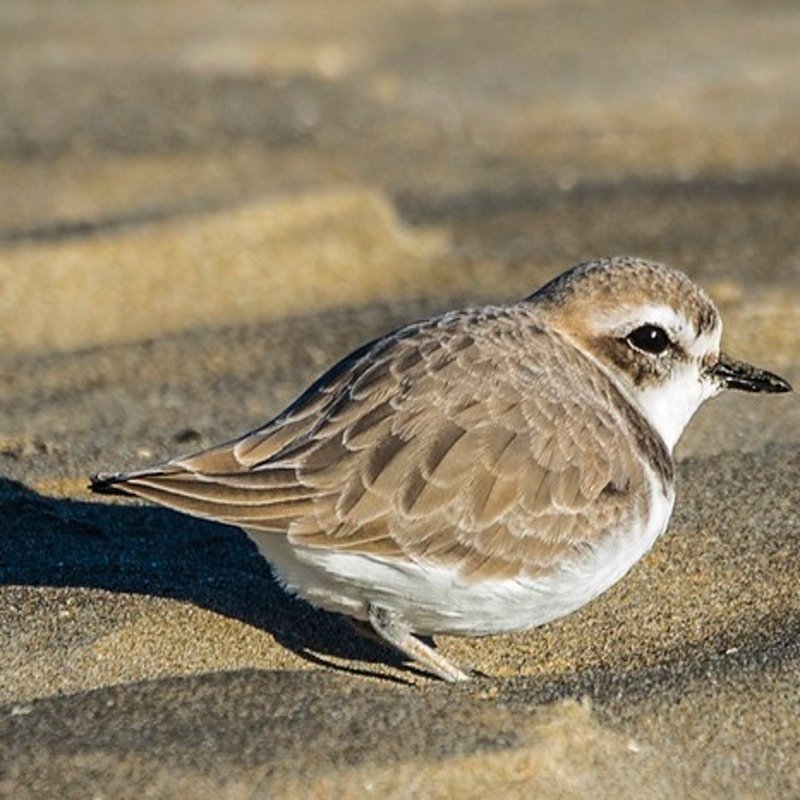The snowy plover, Charadrius nivosus is a tiny wader in the plover family, measuring approximately 6 -7 inches in length. Ecuador, Peru, Chile, the southern and western United States, and the Caribbean are all breeding grounds for this species. It was once considered a subspecies of the Kentish plover but is now recognized as a separate species.
Quick Overview: Charadrius Nivosus – Snowy Plover
Body size: Around 6-7 in (15-18 cm) and a weight of 40 g (1.4 oz)
Main colors: Brown, White, Black, Gray
Range: Southern and the Western United States
Migratory Bird: Yes
Best time of the year to see in the U.S.: June, July, August, September
Conservation Status: Near Threatened
Snowy Plover Description
Snowy Plover adults have a pale sandy brown top and a white underside. Adults have a black spot behind the eye, a black spot on the front of the crown, and a partial collar over the breast during the summer. Adults that are not reproducing are sandy gray with no black cheek patches and a brown partial collar.

Size
These birds have a length of 6-7 in (15-18 cm) and a weight of 40 g (1.4 oz). Their wings could range from 13-14 in (33-36 cm).
Feeding
Crustaceans, insects, and marine worms are all included. Along the coast, this species may feed on a variety of small crustaceans, mollusks, and marine worms, as well as some insects. At inland locations, the diet may consist primarily of insects, such as different flies and beetles.
Habitat
Snowy Plovers are found largely in open, sandy habitats next to bodies of water. This category covers coastal beaches and barrier islands, as well as the desolate coastlines of interior salty lakes.
Behavior
These little birds are most active in the cold early morning hours and spend the remainder of the day resting. Snowy plovers are gregarious and can form flocks of up to 300 individuals at times. They frequently congregate in small ponds throughout the breeding season to wash, drink and forage in unison.
Plovers survive by acquiring non-saline water through their insectivorous diet, limiting their activities to regions near water, and standing in the water during periods of high ambient temperature.
Charadrius Nivosus Scientific Classification
- Kingdom: Animalia
- Phylum: Chordata
- Subphylum: Chelicerata
- Class: Aves
- Order: Charadriiformes
- Family: Charadriidae
- Genus: Charadrius
- Species: Charadrius nivosus
Best time of the year to see
The best time to see these birds in the United States is during the summer season (June – September).
Distribution of the Snowy Plover in the USA
This species inhabits the Pacific Coast from Washington to Baja California and the Gulf Coast from Florida to the Yucatan Peninsula. It is also found throughout much of the West Indies.
The Snowy Plover can be found in the following states in the United States – Alabama, Alaska, Arizona, Arkansas, Delaware, Georgia, Hawaii, Idaho, Kentucky, Louisiana, Maryland, Mississippi, Montana, Nevada, New Mexico, North Carolina, Oklahoma, Oregon, South Carolina, Tennessee, Texas, Utah, Virginia, Washington, West Virginia, and Wyoming.

